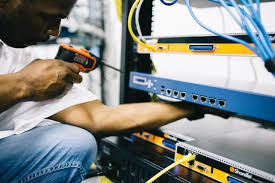In today’s global marketplace, consumers have access to an endless variety of products. From household electronics and medical devices to toys, furniture, and industrial equipment, safety has become a non-negotiable factor. This is where product safety testing plays a critical role. It ensures that products are safe to use, comply with regulatory standards, and build consumer confidence. For manufacturers, retailers, and distributors, investing in safety testing is not just about meeting legal obligations—it’s about protecting brand reputation and ensuring long-term success.
What is Product Safety Testing?
Product safety testing is the process of evaluating a product against recognized safety standards, regulations, and guidelines before it enters the market. It involves a series of laboratory tests, inspections, and assessments to verify whether a product is free from potential hazards that could harm consumers. These hazards may include:
- Mechanical risks (sharp edges, moving parts, choking hazards)
- Electrical risks (short circuits, overheating, shock hazards)
- Chemical risks (toxic substances, flammable materials, heavy metals)
- Biological risks (microbial contamination, allergens)
- Environmental risks (sustainability, recyclability, emissions)
By identifying and addressing these risks early, businesses can prevent costly recalls, lawsuits, and damage to their brand image.
Why is Product Safety Testing Important?
- Consumer Protection
The primary objective of safety testing is to protect consumers from harm. Whether it’s a child’s toy, an electrical appliance, or a medical device, safety testing ensures that the end user can trust the product’s reliability and quality. - Regulatory Compliance
Every region has its own product safety standards. For example:- The European Union (EU) requires CE marking for compliance.
- The United States enforces safety through organizations like the Consumer Product Safety Commission (CPSC) and the Food and Drug Administration (FDA).
- In Asia, standards such as China Compulsory Certification (CCC) and Japan’s PSE mark are mandatory.
- Brand Reputation
A single safety failure can destroy years of brand credibility. On the other hand, companies that consistently deliver safe and reliable products earn consumer trust and loyalty, which translates into repeat business. - Cost Reduction in the Long Run
Although safety testing may seem costly upfront, it prevents expensive recalls, redesigns, or legal disputes in the future. A proactive approach saves time, money, and resources.
Types of Product Safety Testing
Different products require different forms of testing. Some of the most common include:
1. Electrical Safety Testing
Used for appliances, electronics, and industrial equipment. Tests include:
- Ground continuity tests
- Insulation resistance testing
- Leakage current testing
- High-voltage endurance tests
2. Mechanical and Physical Testing
For toys, tools, furniture, and equipment. Tests cover:
- Sharp edge and point assessments
- Drop and impact resistance tests
- Stress and fatigue analysis
3. Chemical Safety Testing
Ensures products are free from hazardous substances. Common tests:
- Lead and heavy metals analysis
- Volatile organic compounds (VOC) testing
- Flammability testing
- Food contact safety assessments
4. Environmental Testing
Products are tested for durability and sustainability. Examples include:
- Temperature and humidity resistance
- Salt spray corrosion testing
- UV and weathering tests
- Recycling and eco-compliance checks
5. Biocompatibility and Medical Testing
Essential for medical devices, pharmaceuticals, and personal care products. Tests include:
- Cytotoxicity testing
- Skin irritation and sensitization tests
- Sterility and microbial resistance
Global Standards and Certifications
Manufacturers must align their products with global standards, depending on their target markets. Some key certifications include:
- CE Marking (EU) – Ensures compliance with European safety directives.
- UL Certification (USA) – Widely recognized for electrical and fire safety.
- FCC Certification (USA) – Required for electronic devices emitting radio frequency.
- ISO Standards (Global) – Provide quality and safety benchmarks across industries.
- RoHS & REACH (EU) – Control hazardous substances in electronics and chemical safety.
- CCC Mark (China) – Mandatory for various product categories.
Understanding and meeting these certifications opens doors to international markets.
The Process of Product Safety Testing
The safety testing process typically follows these steps:
- Product Analysis – Identifying potential hazards based on product type, design, and use.
- Test Planning – Selecting appropriate standards and designing test procedures.
- Laboratory Testing – Conducting physical, chemical, electrical, or biological evaluations.
- Compliance Review – Comparing results with regulatory standards.
- Certification – Awarding the appropriate mark or approval if the product passes.
- Ongoing Monitoring – Periodic testing to ensure products remain compliant after updates or design changes.
Challenges in Product Safety Testing
While essential, safety testing comes with challenges:
- Evolving Regulations – Standards frequently change across different markets.
- Complex Supply Chains – Components sourced globally may not meet uniform safety requirements.
- Cost and Time Constraints – Smaller companies often struggle with testing expenses.
- Innovation Risks – New technologies, such as IoT and AI-powered devices, require updated testing methods.
The Future of Product Safety Testing
As technology advances, product safety testing is also evolving:
- AI and Machine Learning are being used to predict risks and identify potential hazards faster.
- Digital Twins allow virtual testing before physical prototypes are created.
- Sustainability Testing is becoming essential, with growing consumer demand for eco-friendly products.
- Global Harmonization of Standards is expected, making it easier for companies to sell products worldwide with a single certification process.
Conclusion
Product safety testing is the foundation of consumer trust, regulatory compliance, and long-term business success. It safeguards users, protects brands, and ensures that products meet the highest quality standards. In an increasingly competitive market, companies that invest in rigorous testing not only meet legal obligations but also differentiate themselves as reliable and responsible brands.
From electrical appliances to medical devices and children’s toys, every product must go through safety evaluation before reaching consumers. As global standards evolve and sustainability becomes a priority, safety testing will remain a critical factor in building a safer, smarter, and more responsible marketplace.





